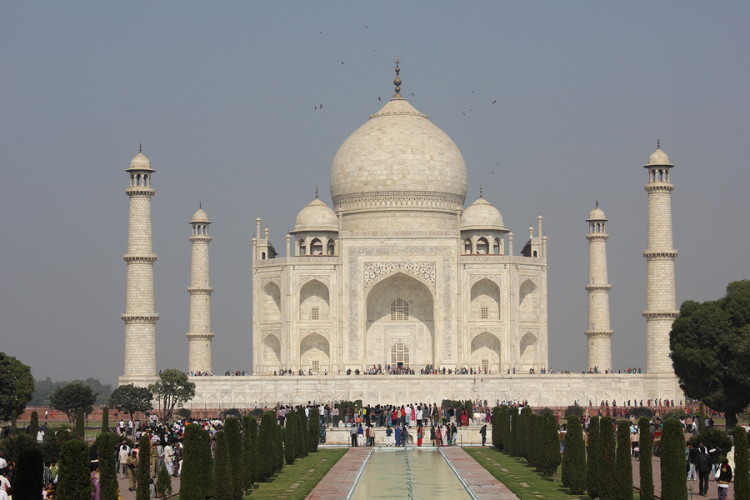Affirmative-Action Lessons From India’s Castes: Noah Feldman

©2015 Bloomberg View
NU2HIC6KLVRH
(Bloomberg View) — Think affirmative action is controversial in the U.S.? The American debate is nothing compared with the fight over caste-based preferences in India, where police smashed heads in the aftermath of last week’s 500,000 strong anti-preference rally in Gujarat.
In both countries, the debate centers on the national constitution, but in subtly different ways. In the U.S., the Constitution guarantees equal protection of the laws, and the question is whether affirmative action is compatible with this command. In India, the constitution affirmatively enshrines preferences in employment and education for members of historically disfavored castes, and amendments to the original constitution have entrenched and intensified the practice.
Race-based discrimination in the U.S. goes back more than three centuries, which is long enough, but India’s forms of discrimination go back millenniums and are grounded in religious and cultural tradition, not just naked racial bias. Yet comparing the two cases is fruitful for what it reveals about the uses and abuses of preference systems considered over time.
The contemporary Indian situation is particularly fascinating. The latest public movement against caste preferences comes from the Patel community, whose members were traditionally village leaders and landowners. If you think you know a disproportionately large number of people of South Asian origin with the name Patel, you may be right: There are 10 million Patels in Gujarat alone.
The Patels’ historical position puts them outside the schedule of traditionally disfavored castes who qualify for preferences. Their protest can therefore be tentatively compared to the anti-affirmative-action sentiments of white, male, middle-class Americans who think that the practice denies them equal opportunity. As in the U.S., not all Patels are privileged or well-off, yet even poor Patels fail to qualify for preferences.
The main technical difference is that, in the U.S., it’s almost always very difficult to be certain that one hasn’t gotten a job or admission to a university because of affirmative action. In India, where quotas are explicit, it’s much easier to make that determination definitively. Yet from the perspective of the person denied, suspicion and certainty may not make very much practical or political difference.
The reason for caste preferences in the Indian constitution goes back to the founders of the modern nation, particularly from Jawaharlal Nehru’s Congress party. Their aspiration, inspired in part by Mahatma Gandhi, was to counteract the extreme class distinctions wrought by caste, especially under British imperial rule. Under these circumstances, it made sense to single out particular disfavored groups in the constitution.
As the scholar Madhav Khosla, author of an invaluable book on the Indian constitution, puts it, India’s founding fathers had a good reason for putting asymmetry into the constitution. The inequality was so pervasive that it would’ve been absurd to say the law must treat everyone equally. Facial neutrality would’ve continued the structure of inequality.
But as Khosla also notes, later amendments to the Indian constitution that deepened the effects of caste preferences have been equally asymmetric, but less justified. In particular, permanently enshrining caste distinctions can create subclasses of privileged members of formerly disadvantaged castes.
The solution, if there is one, is means-testing. If quotas are to be used in India, they should be based on existing, persistent inequality, measured in terms of poverty and access to educational institutions. In the main, those who benefited would generally be members of discriminated-against castes. But it would be harder for movements like the one emerging among the Patels to depict the system as fundamentally unfair.
Over time, it seems logical to move U.S. affirmative action in the same direction, targeting poverty and lack of educational opportunity rather than race. True, this approach might forgo some of the social advantages of advancing the interests of a black and Latino elite. That’s a real cost, although one that’s rarely acknowledged. Do we want a system of affirmative action that wouldn’t give an extra push to a young Barack Obama, who wasn’t raised in poverty?
That said, purely racial affirmative action has well-known negative consequences — among them the possibility of racist backlash. One possible solution is to introduce an economic component to race-based affirmative action gradually, over generations.
In India, changing existing arrangements will be extraordinarily difficult. Members of previously disadvantaged castes form a highly significant interest group. Entrenched political preferences can’t easily be changed without a major political cost. And the constitutional status of the preferences makes it even harder to change the status quo.
Here, at least, the U.S. system has an advantage over its Indian counterpart. The U.S. Constitution allows for changes to affirmative action, and even allows for its elimination by legislative means.
But there’s an important lesson here for the Supreme Court: Don’t freeze the affirmative-action issue unnecessarily by declaring the practice unconstitutional. Righting past social wrongs requires creative and dynamic social programs. Once something is interpreted as being in a constitution — whether as obligatory or as prohibited — it becomes much more difficult to effect change.
Affirmative action needs to evolve in the direction of economic analysis. The U.S. Supreme Court should let it, and the Indian polity should find ways to make the same move over time.
This column does not necessarily reflect the opinion of the editorial board or Bloomberg LP and its owners.
To contact the author of this story: Noah Feldman at nfeldman7@bloomberg.net To contact the editor responsible for this story: Stacey Shick at sshick@bloomberg.net
For more columns from Bloomberg View, visit http://www.bloomberg.com/view



No Comment